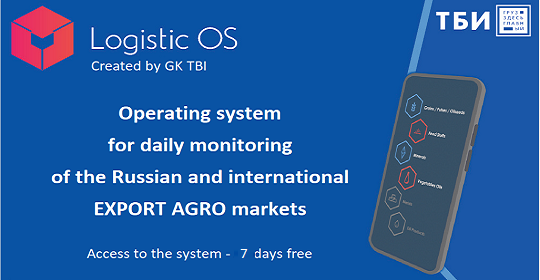In the week before February 1, Russian exporters «strained themselves» and sent abroad 40% of the seasonal harvest in just 7 days.
The last week passed under the banner of «Stakhanov labor»: over this period, over 603 thousand tons of soybeans were exported. This figure is impressive when compared to previous weeks:
It is also impressive in comparison with the total volume of soybeans already exported from the country of the 2020 crop (the same 40%), and with the total crop of last year (4.4 million tons).
That is, 15% of the crop was sold overseas in a week. Mainly to China.
The explanation is simple: from February 1, a duty on the export of soybeans was introduced in the amount of 30% of the customs value, but not less than 165 euros per ton. The duty is valid until June 30, although the legislator transparently hinted that after this date the cancellation unlikely to follow.
But the legislator, it seems, does not take into account one thing: everything that they wanted and could sell for export has already been sold.
How are the breeders going to survive under the yoke of the duty?
Currently, soybeans can be sold abroad at 35-40 thousand rubles per ton. True, 30% of this will have to be paid as a duty. Manufacturers consider this rate too high, “prohibitive”. But at 20% they could agree. As noted by Vladimir Yusupov, executive director of the Association of Peasant Farms and Agricultural Cooperatives of Russia in the Amur Region, a 30% duty will “strangle” the soyevods.
Interestingly, in 2020, 428 million dollars were raised from the export of soybeans from the Russian Federation, and in 2019 — 246 million dollars. At the same time, the harvest remained at the level of 4.4 million tons. That is, almost double profit growth is a consequence of price increases.
The hardest part is in the Far East, where at least 2 million tons of soybeans are grown per year, and at least half are sold to China. What to do now with soybeans, which will grow in September (almost all of them were sold last year) is still unclear.
The head of the Ministry of Agriculture of the Amur Region, Oleg Turkov, is categorically against the sale of «clean» soybeans: according to him, this is the same as exporting untreated timber. And every 100 thousand tons of exported soybeans is 2 billion rubles of money, which local processors received less.
However, processors do not know where they would put the manufactured products. In the domestic market, the demand for soybean meal and oil is practically zero. So even if you process all the soybeans produced, down to the last bean, the question of product marketing remains.
It is unprofitable to transport to the central part of the country — the cost of transport will be such that in the end the price will be prohibitive.

So it’s easier to just sell soybeans to China and not worry about anything.
However, now this path is almost closed — unless prices will rise further and cover even the 30% rate.
In this regard, at the moment, the soybean breeders are at a loss as to what to do next. But there is still time until the new harvest. And while the soybeans are ripening, it is possible that solutions will also ripen.

